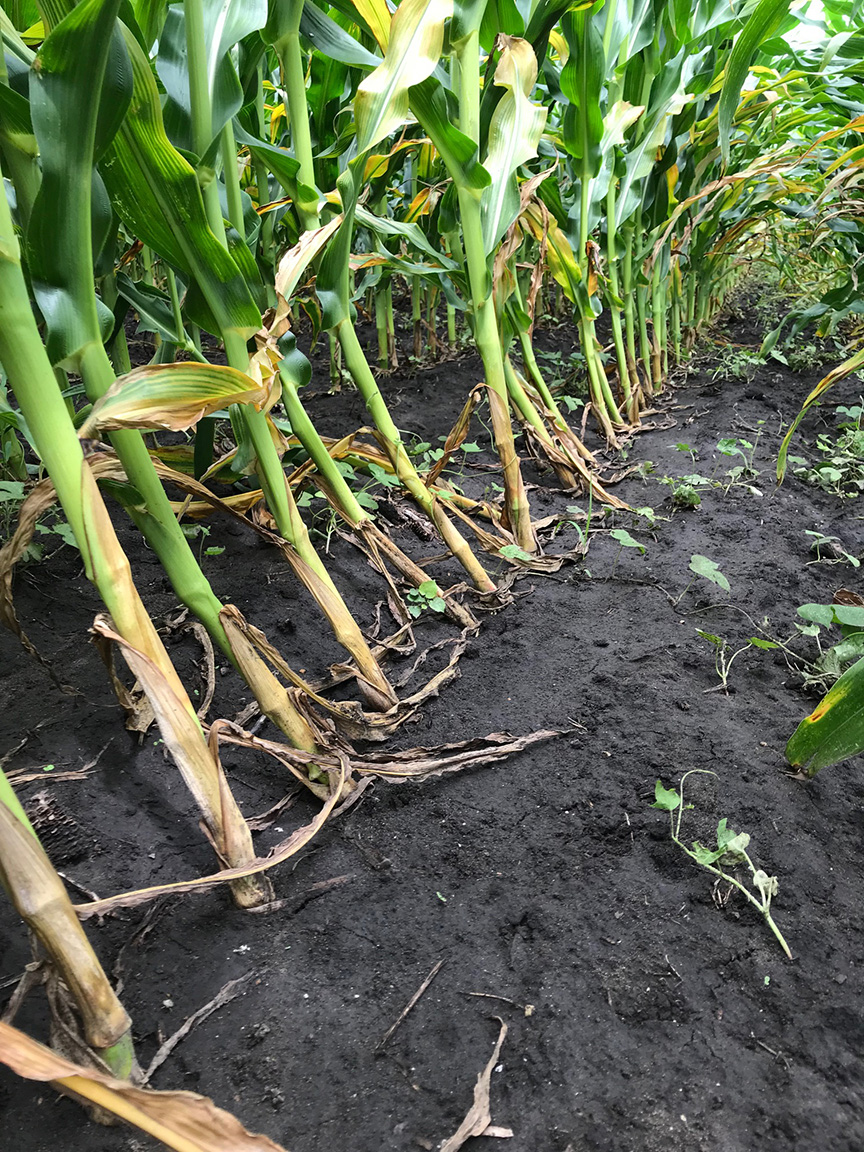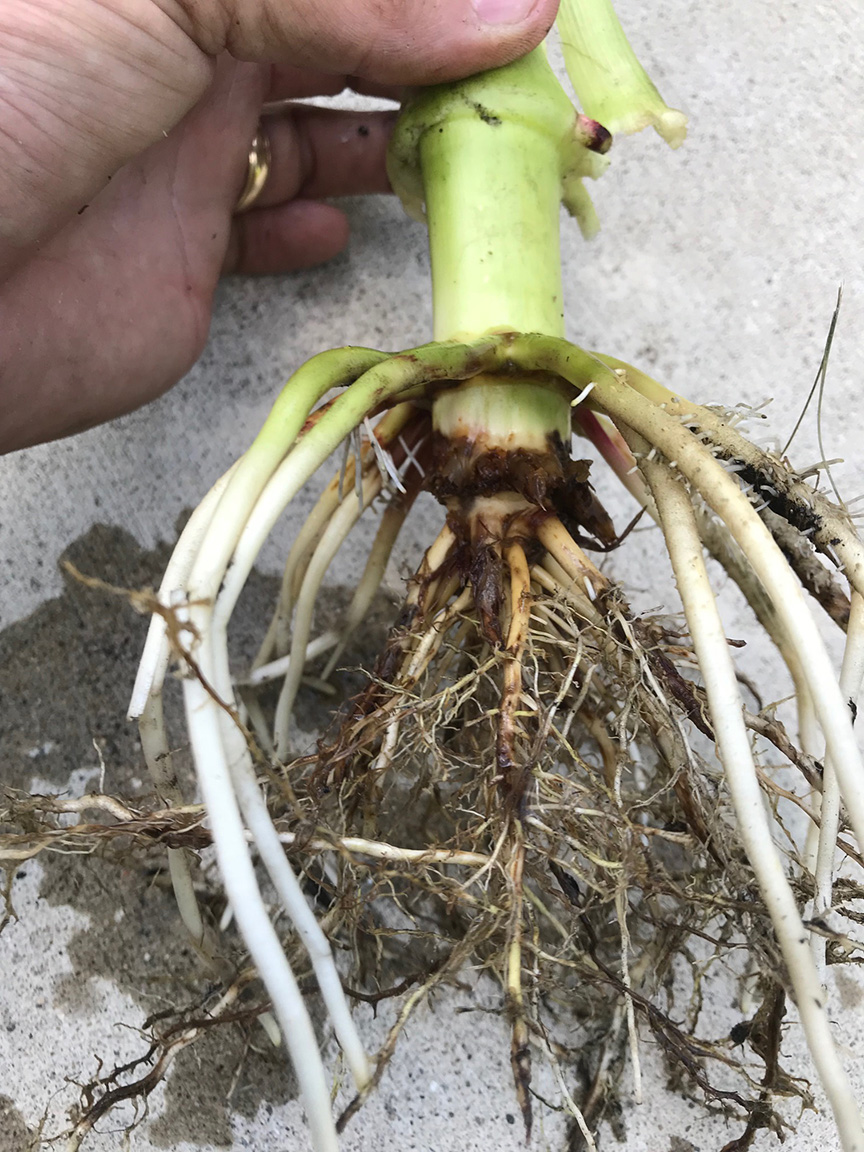This past week we learned of a producer in a northwestern Indiana county that gambled by not protecting his continuous-corn from rootworm. It was a “money saving” decision, as traited Bt-RW corn or soil insecticides were input costs he decided to forgo. As you can see from the accompanying pictures, it was a mistake.
It is true that western corn rootworm have been at very low levels the past several years. Numerous years of wet soils during egg hatch (climate change?) and efficacy of Bt-RW corn has diminished the pressure from this pest, but not eliminated it. Understandably there are many details to this “lesson learned” situation that have not been revealed by the embarrassed producer. But the first question I would have asked is if he had inspected last year’s corn for rootworm beetles during the time of pollination. This would have been the first logical step (IPM) in his input decision making for this season. In hindsight, without having been to these fields, we know there were significant numbers of beetles to have laid eggs. It may have been either corn pollen/silks or weed pollen that attracted them, but their biology tells us they were there.
We are aware of many astute Indiana producers that have been lowering rootworm control inputs, but only after understanding the risks. Especially with combining field, both corn and soybean, visits during the time that rootworm beetles are actively mating and laying eggs. They, and now this unnamed producer, know that continuous corn is generally HIGH-RISK.
Understanding of the pest’s biology, combined with knowledge by visiting fields, provides the information needed for informed and sound pest management decisions. Happy scouting!

Lodging of corn and rootworm feeding. (Photo Credit: Marty Park).

Root feeding damage by corn rootworm. (Photo Credit: Marty Park).


